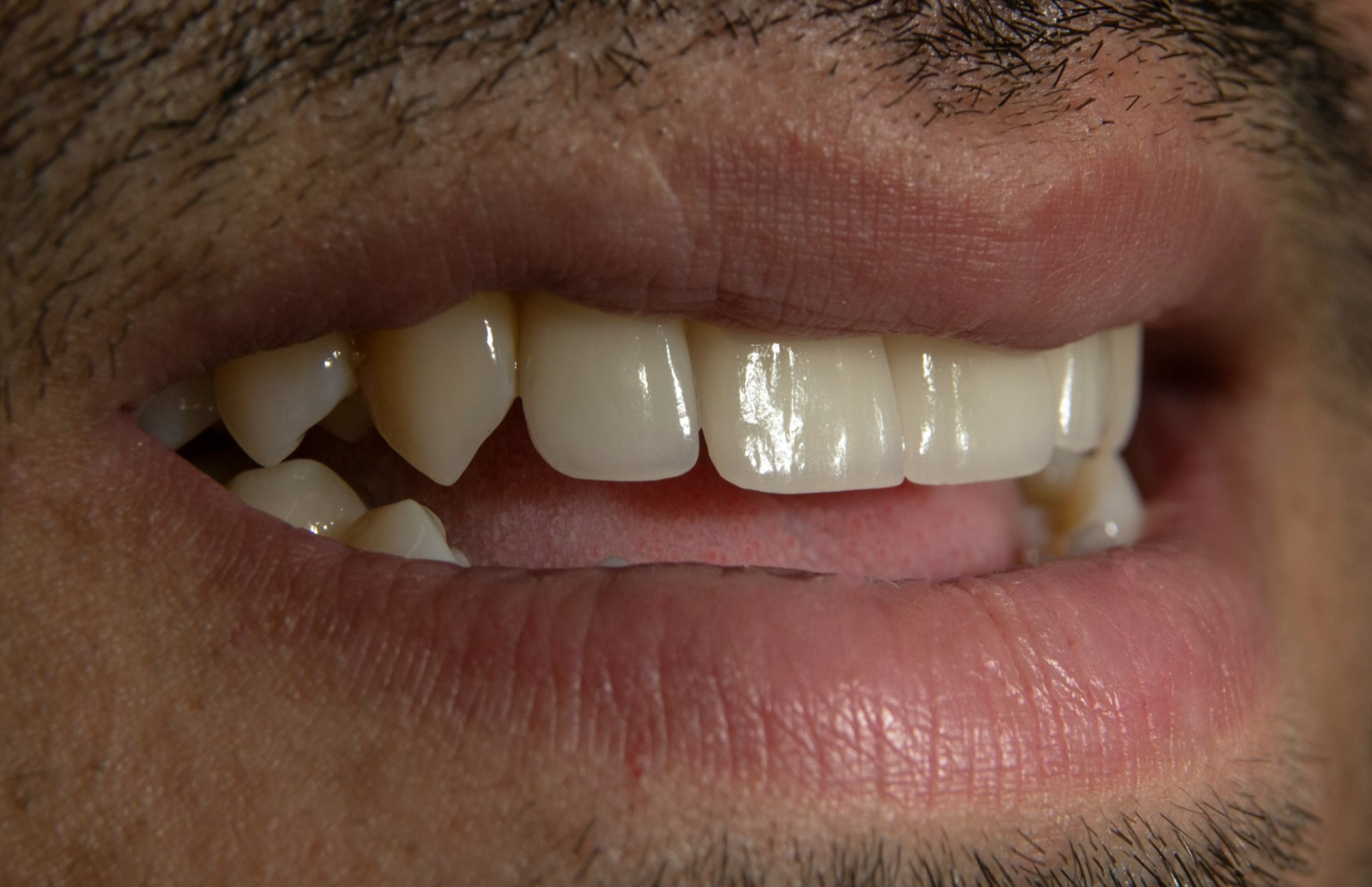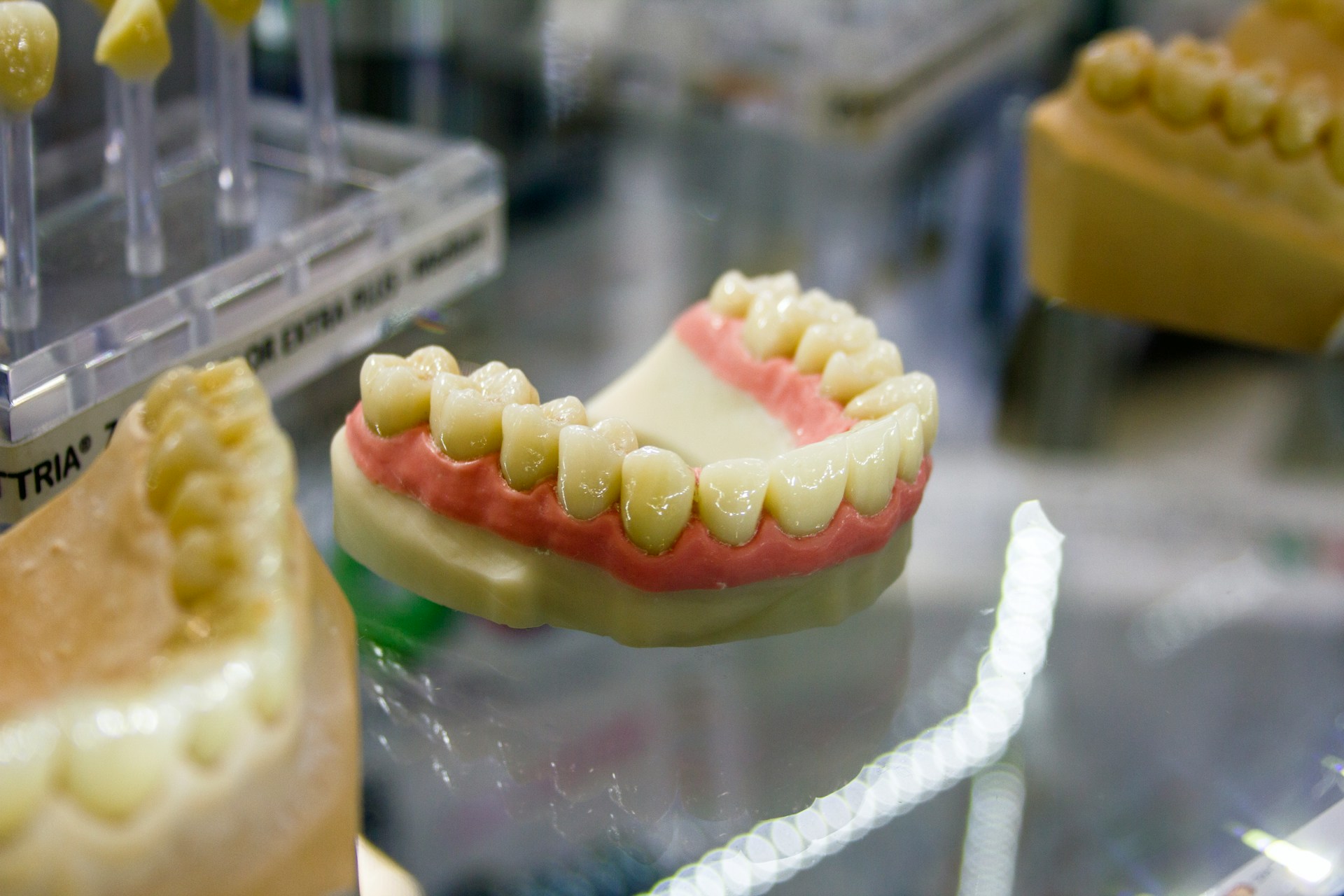Teeth staining is a widespread concern that affects many individuals, often having an impact on their confidence and smile. Several factors contribute to this discoloration, including dietary habits, lifestyle choices, and the natural aging process. So why do teeth stain?
Understanding the underlying causes of tooth stains is crucial for effective prevention and treatment. This article delves into the various reasons teeth become stained, the different types of stains that can occur, and practical tips for maintaining a brighter smile.
Whether one is interested in preventing stains or is actively seeking solutions, there are valuable insights available to assist in achieving a healthier, more radiant smile.
What Causes Teeth Staining?

Tooth discolouration is a common concern for many people, often impacting their confidence and overall aesthetic appeal. The discolouration can result from a variety of factors, including dietary choices, personal habits, and even genetics.
Foods and beverages such as coffee, tea, red wine, and sugary items can introduce pigments that cling to the enamel, resulting in visible stains. Moreover, inadequate oral hygiene can worsen plaque buildup and tartar formation, which can further affect the colour of your teeth.
It is important to understand the factors that contribute to tooth discolouration in order to maintain dental health and prevent long-term consequences.
1. Foods and Drinks
Certain foods and beverages significantly contribute to teeth staining, with many commonly consumed items leading to discolouration over time. For instance, beverages such as coffee, tea, and red wine are well-known for leaving dark stains on tooth enamel.
Additionally, sugary snacks and acidic foods can result in enamel erosion, making teeth more susceptible to staining.
Beverages like cola and fruit juices can be surprisingly harmful due to their high acidity and sugar content. These factors create an environment that promotes bacterial growth and erodes the protective enamel layer.
When assessing the potential for staining, it is important to consider the pigments found in these items. Dark berries and sauces like soy sauce can leave significant marks on enamel, whereas lighter beverages, such as white wine, are generally less damaging.
The role of acidity is particularly critical, as it can worsen staining by softening enamel and making it more vulnerable to the pigments in various foods. Furthermore, frequent consumption of sugary snacks can contribute to plaque build-up, leading to further discolouration.
Therefore, being mindful of one’s diet is essential for maintaining a brighter, healthier smile.
2. Tobacco Use
Tobacco use, whether through smoking or chewing, ranks among the leading causes of teeth staining, resulting in significant discolouration that can be quite challenging to reverse. The tar and nicotine found in tobacco products not only stain teeth but also contribute to plaque build-up, which can further deteriorate oral health.
Beyond the aesthetic concerns, this staining can lead to more serious dental issues, such as gum disease and cavities. Regular smokers may observe that their teeth gradually take on a yellow or brown hue over time, which can negatively impact both their smile and self-esteem.
For those who use tobacco, maintaining good oral hygiene is essential. Routine dental check-ups and cleanings can help manage some of the damage caused by tobacco use. However, the most effective preventive measure is to quit tobacco altogether.
By making this choice, individuals can significantly enhance their dental health, reduce staining, and lower the risk of other oral health issues, ultimately paving the way for a brighter, healthier smile.
3. Poor Oral Hygiene
Maintaining poor oral hygiene is a significant factor that contributes to tooth staining. It leads to the accumulation of plaque and the build-up of tartar, which can darken the colour of teeth over time. When individuals neglect to brush and floss regularly, bacteria can thrive in the mouth, ultimately affecting both the appearance and health of their teeth.
To address these concerns, it is crucial to establish a consistent oral hygiene routine. This should include:
- Brushing at least twice a day with fluoride toothpaste, as it effectively removes food particles and plaque.
- Flossing daily, as it reaches those tight spaces between teeth that a toothbrush may not clean thoroughly.
Additionally, using mouthwash can enhance overall oral cleanliness by targeting bacteria, further reducing plaque, and freshening breath. By incorporating these practices into daily routines, individuals not only prevent unsightly staining but also strengthen enamel, ensuring that their teeth remain healthy and vibrant for years to come.
4. Aging
As individuals age, it is natural for their teeth to undergo changes that may lead to staining and discolouration. The enamel, which serves as a protective layer for our teeth, gradually wears down over time. This wear exposes the underlying dentine, which has a yellower hue, ultimately impacting the overall appearance of the teeth.
Various factors can exacerbate this erosion, including dietary choices, oral hygiene habits, and lifestyle practices. For example, frequently consuming acidic foods and beverages can accelerate the loss of enamel, worsening the discolouration issue. Additionally, mineral loss due to decreased saliva production and diminished remineralisation processes can render teeth more susceptible to stains.
To combat these effects, adopting healthier dietary habits—such as incorporating more calcium-rich foods—along with maintaining a consistent dental care routine, including fluoride treatments, can be highly effective in preserving enamel and mitigating discolouration over time.
Furthermore, regular dental visits can provide professional cleanings that help maintain a bright and healthy smile.
5. Medications
Certain medications can lead to teeth staining, particularly antibiotics such as tetracycline, which are known to cause intrinsic stains during the development of teeth. Additionally, some dental products containing specific ingredients may contribute to changes in tooth colour over time.
The effects of these medications can vary significantly, resulting in either intrinsic or extrinsic stains. Intrinsic stains occur beneath the enamel and are often linked to childhood antibiotic use or specific medical treatments, resulting in a darker appearance of the teeth. On the other hand, extrinsic stains usually arise from surface factors, such as certain foods, beverages, or smoking, often leading to yellowing or browning of the enamel.
For individuals experiencing these colour changes, it is essential to consult with a dentist. Dental professionals can provide personalised advice regarding alternative medications or treatments. Options may include professional whitening procedures or the use of specially formulated dental care products designed to help restore a brighter smile.
6. Genetics
Genetics can indeed play a significant role in tooth staining, as it determines the thickness and composition of enamel, which ultimately influences an individual’s susceptibility to discolouration. Some individuals may naturally have thinner enamel, which makes their teeth more vulnerable to staining from various substances.
Additionally, genetic factors affect the production of other dental components, such as dentine, which can also contribute to discolouration. Often, family histories reveal patterns of dental issues, including a tendency towards tooth staining, indicating a possible inherited vulnerability.
Recognising this information is crucial, as it enables early intervention. By understanding these genetic predispositions, individuals can take proactive measures to prevent staining. This includes adopting personalised dental hygiene practices, scheduling regular dental visits, and considering dietary modifications to reduce the risk of staining and promote overall dental health.
Types of Teeth Staining

Tooth staining can be classified into several categories, each with its own unique characteristics and causes.
By understanding these types, such as extrinsic stains that come from external sources and intrinsic stains that arise from internal factors, individuals can more effectively address the discolouration they experience.
1. Extrinsic Stains
Extrinsic stains are surface stains that form on the outer layer of teeth, typically resulting from the consumption of certain foods and drinks, as well as insufficient oral hygiene practices. These types of stains can often be effectively addressed with whitening toothpaste and professional dental cleanings, since they have not penetrated deeply into the enamel.
Common offenders include dark beverages such as coffee, tea, and red wine, along with various fruits and sauces that can gradually discolour the teeth over time. Additionally, habits like tobacco use play a significant role in the appearance of these unsightly stains.
Fortunately, by adhering to a diligent oral care routine that includes regular brushing, flossing, and routine visits to the dentist, individuals can significantly reduce the likelihood of developing extrinsic stains. Utilising products specifically designed for stain removal can further enhance these efforts.
By taking a proactive approach to oral hygiene, one can achieve a brighter smile and mitigate the effects of external staining agents.
2. Intrinsic Stains
Intrinsic stains develop beneath the enamel’s surface and are often caused by factors such as genetics, medications, or trauma to the teeth. These stains can be more difficult to eliminate and may require professional whitening treatments or cosmetic dentistry solutions.
In contrast to extrinsic stains, which appear on the surface due to external factors like food, drinks, or tobacco use, intrinsic stains originate from internal influences. For example, certain antibiotics, such as tetracycline, taken during childhood can lead to discolouration that becomes deeply embedded within the tooth structure.
Addressing intrinsic stains typically involves a more comprehensive approach, including procedures like dental bonding, veneers, or advanced whitening techniques that target the deeper layers of the enamel.
Understanding the underlying causes of these stains not only helps in choosing the right treatment but also highlights the importance of preventive care to reduce the risk of future staining.
3. Age-Related Stains
Age-related stains on teeth usually arise from a mix of external and internal factors, resulting in a gradual discolouration as we grow older. The natural wearing down of enamel reveals more of the underlying dentine, which tends to be darker and contributes to the overall appearance of stained teeth.
This gradual process can often be accelerated by lifestyle choices, such as smoking, excessive consumption of coffee, tea, or red wine, and insufficient oral hygiene practices.
To maintain a bright smile and combat these age-related stains, it is essential for individuals to prioritise regular dental care routines. This should include thorough brushing and flossing, along with routine dental check-ups.
Professional cleanings are effective in removing surface stains that accumulate over time, while at-home whitening products can provide additional support to keep teeth looking their best. Staying hydrated and selecting teeth-friendly foods also plays a significant role in preventing further discolouration.
How to Prevent Teeth Staining?
Preventing tooth staining involves taking proactive steps that emphasise good oral hygiene, mindful dietary choices, and regular visits to the dentist.
By establishing a thorough care routine that includes brushing and flossing, as well as moderating the consumption of foods and drinks that can cause staining, individuals can enjoy a brighter smile and improved overall dental health.
1. Practice Good Oral Hygiene
Maintaining good oral hygiene is fundamental in preventing tooth staining, as it effectively removes plaque build-up and helps avert discolouration. By consistently brushing, flossing, and using mouthwash, individuals can significantly improve their oral care routine.
To achieve optimal oral hygiene, it is recommended to brush your teeth at least twice a day for two minutes each time, using a fluoride toothpaste that strengthens enamel.
Daily flossing is equally important, as it reaches areas between the teeth that a toothbrush may overlook, thereby reducing the risk of cavities and gum disease. Additionally, using an antimicrobial mouthwash can offer an extra layer of protection by minimising the presence of bacteria in the mouth.
By implementing these practices consistently and combining them with regular dental check-ups, individuals can not only preserve the whiteness of their smiles but also enhance their overall health.
2. Limit Staining Foods and Drinks
Limiting the consumption of staining foods and beverages is essential for preserving the natural colour of your teeth. While drinks like coffee, tea, and red wine are quite enjoyable, they can introduce pigments that gradually darken tooth enamel over time.
To minimise their impact, it may be beneficial to consider substituting these beverages with lighter options, such as herbal teas or white wines, which are generally less likely to cause discolouration.
Additionally, incorporating more crunchy fruits and vegetables, such as apples and carrots, can help naturally scrub the teeth while eating, further reducing the potential for staining.
Dairy products, such as cheese and yoghurt, can also be advantageous, as they help neutralise acids and promote saliva production, which is vital for maintaining oral health.
By implementing these small dietary adjustments, individuals can significantly enhance the appearance and overall health of their teeth.
3. Quit Smoking
Quitting smoking stands out as one of the most effective strategies for preventing teeth staining since tobacco use is strongly linked to severe discolouration and poor oral health. By eliminating this habit, individuals can significantly improve the appearance of their teeth and enhance their overall wellbeing.
Moreover, quitting can lower the risk of gum disease, cavities, and even tooth loss, which are common issues faced by smokers. Maintaining a healthier mouth not only enhances aesthetics but also plays a crucial role in improving overall health, as oral health is closely connected to systemic conditions such as heart disease and diabetes.
For those considering quitting, several practical tips can be quite helpful. Utilising resources like nicotine replacement therapies, joining support groups, or practising mindfulness techniques can make the transition smoother.
Additionally, regular dental check-ups can serve as both motivation and a source of professional guidance, making the journey towards a smoke-free life even more rewarding.
4. Visit the Dentist Regularly
Regular visits to the dentist are vital for maintaining optimal dental health and preventing stains through professional cleaning and assessments. Dentists provide personalised advice and treatments that help keep your teeth in excellent condition.
These appointments offer a valuable opportunity for comprehensive examinations and are crucial in identifying potential issues such as cavities or gum disease at an early stage. During a typical visit, the dentist or hygienist conducts a thorough cleaning to remove plaque and tartar build-up, which significantly contributes to discolouration.
Routine evaluations also allow for tailored recommendations regarding home care and lifestyle adjustments that can assist in stain prevention. Regular check-ups ensure that any staining factors, such as a poor diet or smoking habits, are addressed, ultimately paving the way for a healthier, brighter smile.
Treating Teeth Stains

When tooth stains occur, there are several treatments and procedures available for effective stain removal and whitening.
Ranging from home remedies to professional dental treatments, having a clear understanding of these options can help restore the brightness of your smile and boost your confidence.
1. Professional Teeth Whitening
Professional teeth whitening procedures are remarkably effective in removing deep stains and restoring the brightness of teeth, often achieving results that at-home remedies simply cannot match. Dental professionals employ advanced techniques and high-quality products to ensure both safety and effectiveness during the whitening process.
These professional services can be divided into two main categories: in-office treatments and take-home kits, each offering unique advantages tailored to individual needs.
The cost of teeth whitening treatments can vary, with in-office procedures typically being more expensive due to their immediate and dramatic results. However, many patients consider the investment worthwhile for the noticeable transformation and long-lasting effects.
In-office procedures utilise stronger whitening agents and are conducted under the supervision of trained staff, providing results that can often be seen after just one session. Conversely, take-home kits present a convenient and more budget-friendly alternative, allowing individuals to gradually achieve whitening at their own pace using custom-fitted trays and professional-grade gels.
Regardless of which method one chooses, it is essential to have a consultation with a dental specialist. This step guarantees a personalised approach that addresses specific dental concerns, provides clarity on costs, and optimises safety throughout the whitening experience.
2. At-Home Teeth Whitening
At-home teeth whitening hacks offer a convenient way for individuals to tackle surface stains and enhance their smiles. Products such as whitening strips and trays enable gradual whitening at one’s own pace, making them quite popular among many.
There is a wide range of formulations available, from whitening pens to LED treatments, allowing users to choose the method that aligns best with their lifestyle and preferences. However, it is essential to follow the manufacturer’s instructions for each product carefully to ensure safe and effective results.
Many of these whitening solutions contain bleaches and other active ingredients, which can cause sensitivity or even damage if not used properly. Therefore, maintaining good dental hygiene—such as regular brushing and flossing—is important.
This practice not only complements the whitening treatments but also helps keep the teeth strong and healthy while achieving a brighter smile.
3. Dental Veneers
Dental veneers serve as a cosmetic dentistry solution aimed at covering discolouration and enhancing the appearance of stained teeth. These veneers, crafted from thin layers of porcelain or composite resin, effectively mask imperfections and contribute to a brighter smile.
This innovative procedure addresses a variety of issues, including chips, gaps, and uneven surfaces, while also providing individuals with an opportunity to boost their confidence with a radiant smile.
The process typically begins with a consultation, during which dental professionals assess the specific needs and circumstances of the patient. Following this assessment, a minimal amount of tooth enamel may be removed to ensure the veneers fit comfortably and appear natural.
Once the veneers are created—often over a few appointments—they are securely bonded to the front of the teeth. Beyond their aesthetic benefits, veneers are also more resistant to stains compared to natural teeth, making them an appealing option for those concerned about the longevity of their dental enhancements.
Individuals should take into account various factors, such as cost, potential sensitivity, and the necessity for ongoing care, to maintain the integrity and appearance of the veneers over time.
4. Dental Bonding
Dental bonding serves as an effective treatment for repairing stained teeth by applying a tooth-coloured resin to the affected area, thereby enhancing aesthetics. This procedure is typically quick and can significantly improve the overall appearance of one’s smile.
Not only does dental bonding provide a seamless look by closely mimicking the natural shade of teeth, but it also presents a minimally invasive solution in comparison to other cosmetic dental procedures. During the treatment, a dentist will prepare the tooth surface to ensure that the resin adheres properly, followed by the careful application of the material, which is then sculpted to blend seamlessly with the surrounding teeth.
Patients can generally expect this process to be completed within a single visit, making dental bonding a convenient option for those seeking a swift solution. Following treatment, appropriate care can help maintain the results for several years, making it a valuable investment in both dental health and appearance.
Frequently Asked Questions
Why Do Teeth Stain?
Teeth can stain for a variety of reasons, including consumption of certain foods and drinks, smoking, poor oral hygiene, and natural aging.
What Causes Teeth to Discolor?
Discoloration of teeth can be caused by numerous factors, such as genetics, medication, and excessive fluoride exposure.
How Does Food and Drink Affect Teeth Staining?
Certain foods and drinks, such as coffee, tea, and red wine, contain colour pigments that can attach to the enamel of the teeth, causing them to stain over time.
Can Smoking Cause Teeth Stains?
Yes, smoking is a major contributor to teeth staining due to the tar and nicotine present in tobacco. These substances can leave yellow or brown stains on teeth.
Is Poor Oral Hygiene a Factor in Teeth Discoloration?
Poor oral hygiene can lead to plaque buildup, which can cause teeth to appear yellow or brown. Regular brushing, flossing, and dental cleanings can help prevent this type of staining.
Can Aging Cause Teeth to Discolor?
As we age, the enamel on our teeth becomes thinner and more translucent, allowing the yellow dentin underneath to show through more prominently. This can give the appearance of yellow or discolored teeth.













